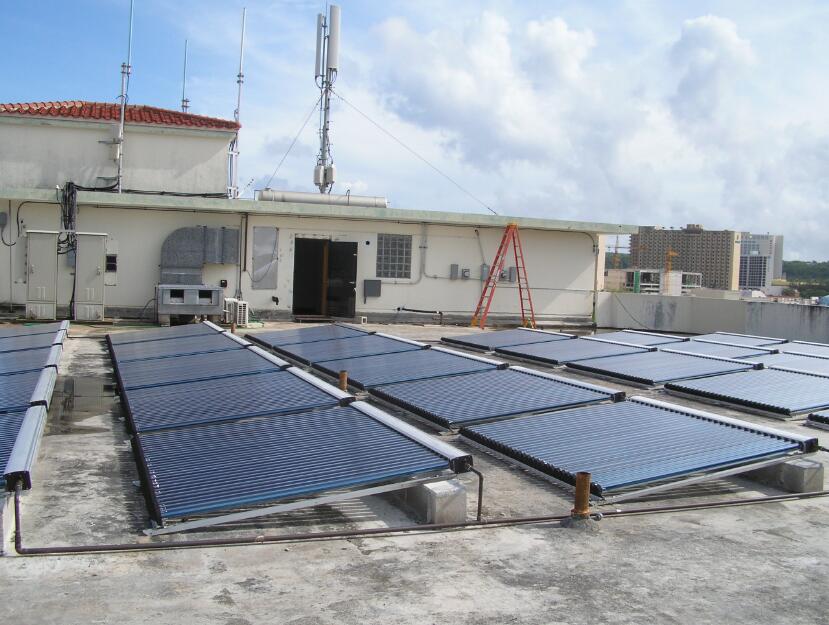Views: 0 Author: Site Editor Publish Time: 2025-10-10 Origin: Site

When using solar thermal collectors with heat pipes during the winter months, there are specific considerations to ensure they function optimally. Heat pipe solar collectors are well-suited for cold climates because of their efficiency and ability to transfer heat even in colder temperatures. Here’s how to get the most out of them during winter:
Vacuum Insulation: Solar thermal collectors with heat pipes are often enclosed in vacuum tubes, which provide excellent insulation. This minimizes heat loss to the cold air, making them more effective in colder environments.
Phase Change Mechanism: Inside the heat pipes, a liquid (usually a refrigerant or alcohol-based substance) vaporizes with minimal heat, transferring thermal energy from the collector to the heat exchanger, even in low ambient temperatures.
Winter Tilt: Adjust the tilt angle of your solar collector to optimize it for the lower winter sun. In general, the optimal angle for winter is your latitude plus 15 degrees.
Steeper Angle for Snow Shedding: A steeper angle not only improves sunlight capture but also helps snow slide off the tubes more easily, keeping the system operational.
Use Anti-freeze Solutions: In colder climates, the fluid used in the heat pipes should be resistant to freezing. Ethylene glycol or propylene glycol-based antifreeze solutions are commonly used to prevent the fluid from freezing in low temperatures.
Insulate Piping: Ensure that the piping connecting the solar collector to the heat exchanger is well-insulated to prevent heat loss and freezing during the winter months.
Snow Accumulation: Even though heat pipe solar collectors are often mounted at a steep angle, snow accumulation can still occur. Regularly remove snow using a soft brush to avoid shading and ensure that sunlight can reach the collector tubes.
Ice Build-up: In regions where ice forms frequently, ensure that any condensation or moisture near the collectors is drained properly to prevent ice build-up, which could obstruct the system.
Heat Output: Keep an eye on the system’s performance during colder periods. While solar thermal collectors with heat pipes are efficient in transferring heat, their performance may drop if they’re covered in snow or if there is prolonged overcast weather.
Back-up Heating: For days when sunlight is insufficient, consider having a backup heating system (such as a conventional water heater) to ensure consistent access to hot water.
Closed-Loop Systems: Many solar thermal systems use a closed-loop design where the heat transfer fluid circulates through a heat exchanger, transferring heat to a secondary fluid like water. In winter, it’s important to ensure this system is insulated and contains antifreeze to avoid freezing damage.
Drainback Systems: Consider using a drainback system, where the fluid drains back into a reservoir when the pump is off. This prevents the fluid from freezing inside the collector when the system isn’t operating.
Inspect Heat Pipes: Before winter, inspect the heat pipes and tubes for any signs of damage, leaks, or degradation in the vacuum seal. Repair or replace any damaged components to ensure efficiency.
Check Fluid Levels: Ensure that the heat transfer fluid is at the correct level and concentration (in the case of antifreeze mixtures) to handle the colder temperatures.
Integration with Backup Heating: During prolonged cold or cloudy spells, integrate the solar thermal collector with an auxiliary heating system (such as electric or gas water heaters). This ensures a continuous supply of hot water or space heating when solar input is minimal.
Heat Dissipation: In extreme cold conditions, it’s possible for the system to overheat if the fluid isn’t circulating properly, especially if the heat demand is lower than the collector’s output. Ensure proper circulation or install a heat dump feature to prevent overheating even in winter.
Solar thermal collectors with heat pipes are well-designed for winter use because of their high efficiency and excellent heat transfer capabilities. To optimize their use in winter, ensure the system is properly angled, insulated, and protected from freezing temperatures. Regular maintenance, such as clearing snow and inspecting the fluid and pipes, will help keep the system running smoothly throughout the cold months.